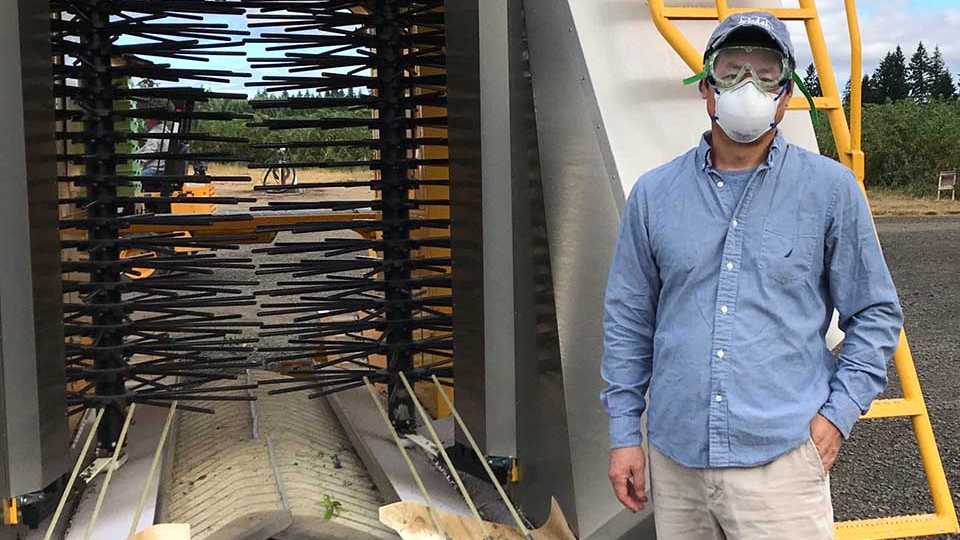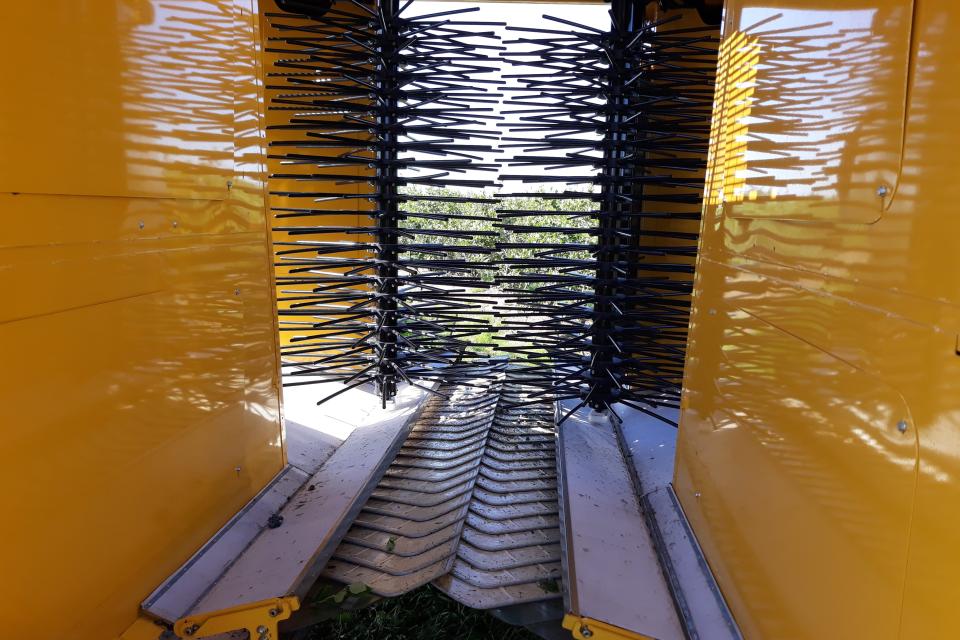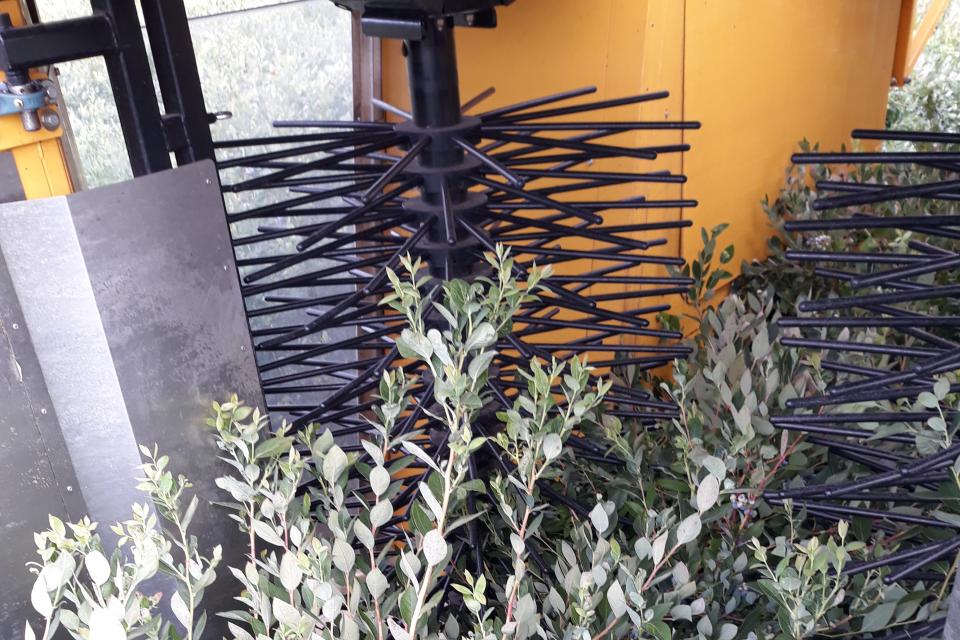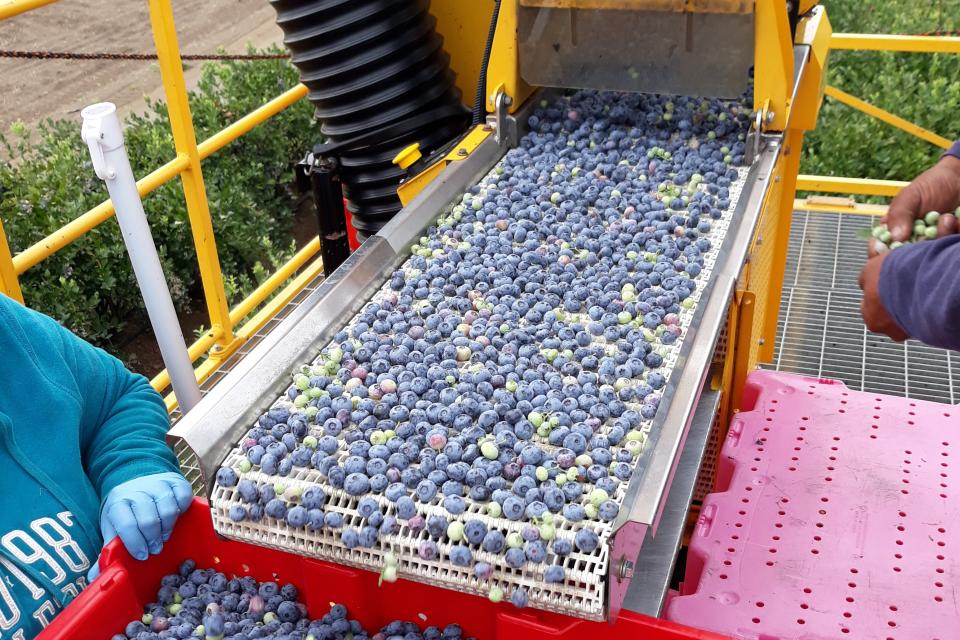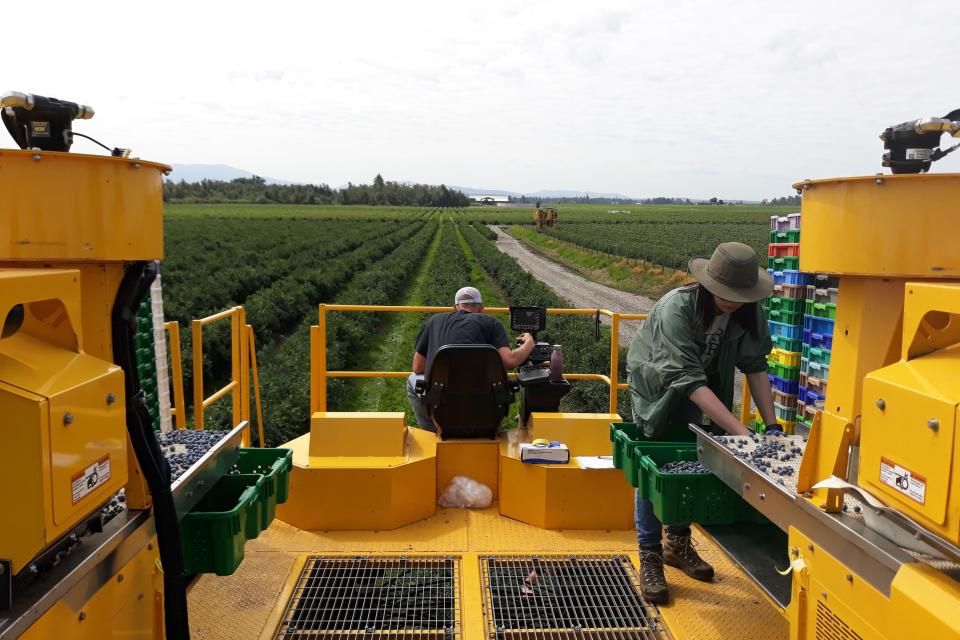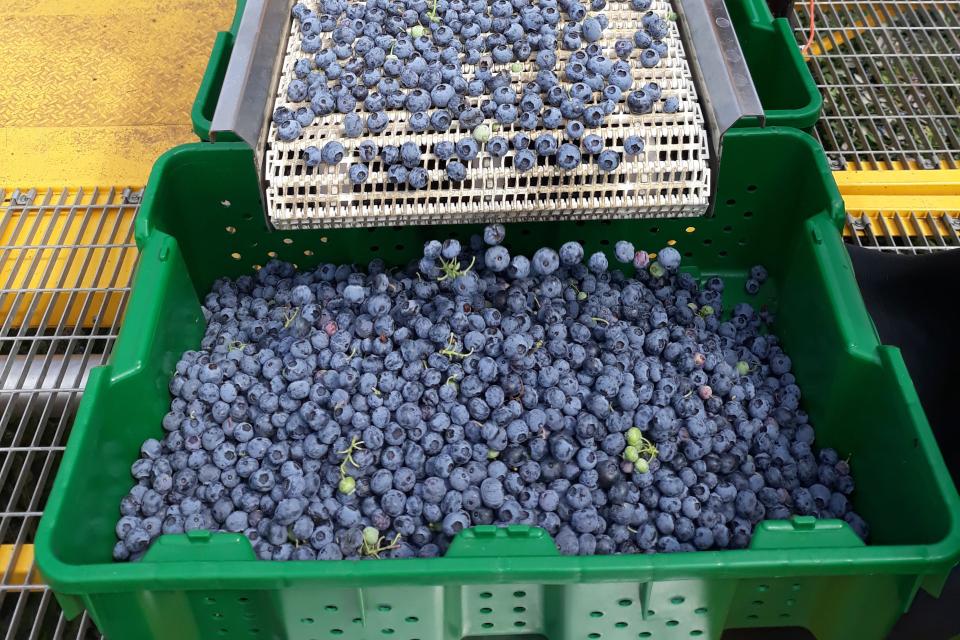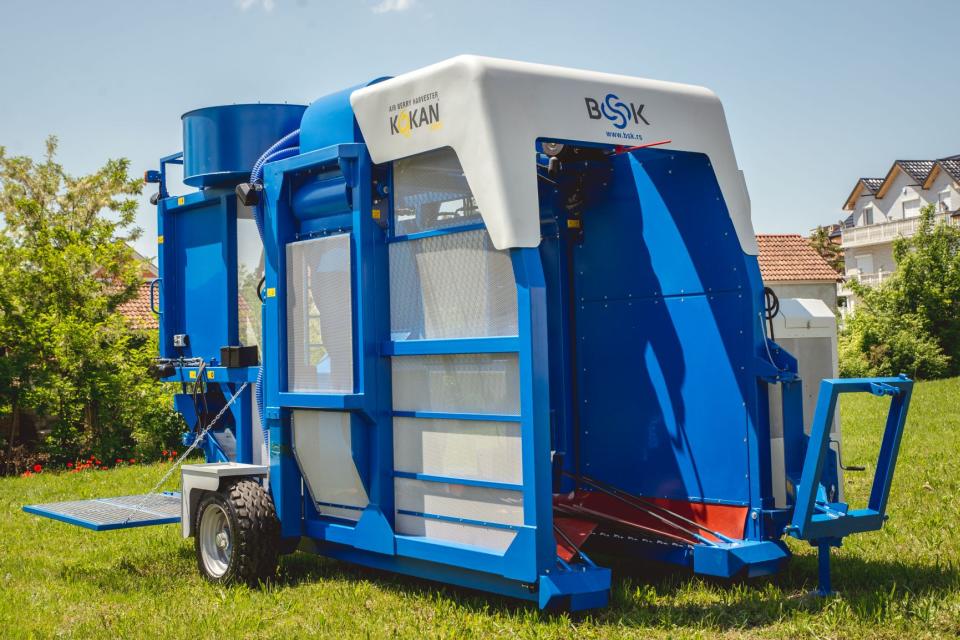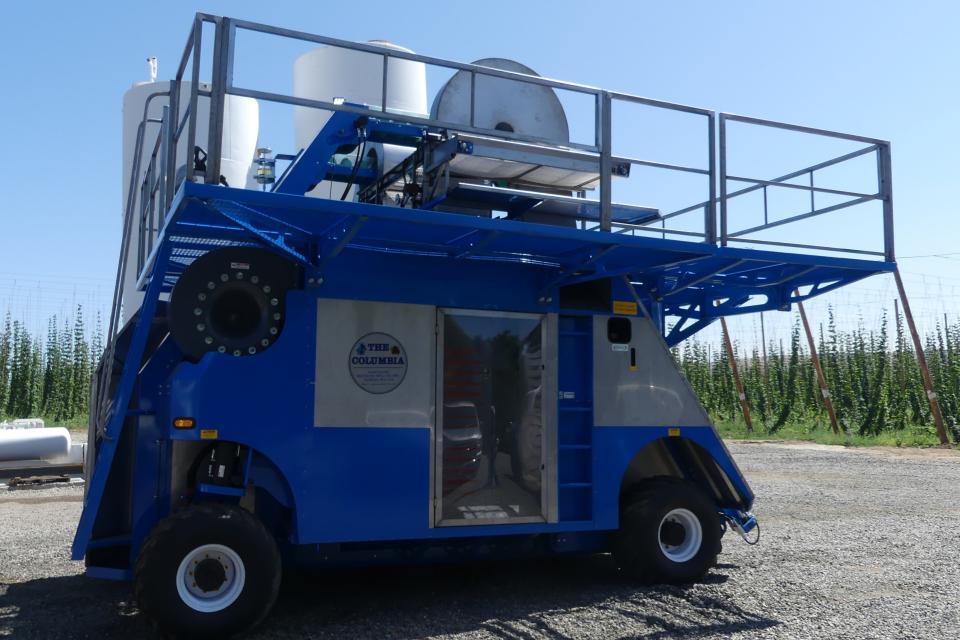Soft-Catch Tech Wanted by Blueberry Growers
Labor issues exacerbated by the COVID-19 pandemic may make for an unprecedented blueberry harvesting season. In turn, growers are increasingly contemplating the use of over-the-row (OTR) machines to harvest their fresh market blueberries, according to researchers at Oregon State University.
Such a switch from hand harvesting to machine harvesting will become more practical with advancements in blueberry harvesting and packing technology, according to Dr. Wei Yang. The OSU Blueberry Extension Agent, who has been conducting research on machine harvesting for fresh market blueberries since 2015, says the industry is developing better harvester catch systems to minimize internal bruising damage (IBD) and other challenges that have historically hindered the use of mechanized harvesters.
Tech Overview
Six companies, Yang says, currently manufacture commercial harvesters: Oxbo International, Littau, Haven, Ag Harvesters, A&B Packing, and Blueline. “It’s interesting to see this healthy competition,” Yang says. “The main difference is how the picking mechanism is designed.”
Five of the companies feature rotary picking mechanisms; Haven utilizes a sway picking mechanism. Common components to each machine are beaters, catch plates, tunnel walls, and conveyor belts. Beater agitation causes blueberries to detach from the bush; fruits are then bounced around and fall onto catch systems.
“The severity of the IBD is determined by ground speed, beater frequency and amplitude, distance to fall, and the catch system. It’s a complex process,” Yang says.
Finding a happy medium is not easy. At a fixed ground speed, increased beater frequency and amplitude will increase the agitation impact and, in turn, increase the potential for more IBD. Meanwhile, at a fixed frequency and amplitude, the lower the ground speed is, the longer the duration of agitation becomes; therefore, more impact is present, resulting in the potential for more IBD.
“Generally speaking, the more time you spend on agitating the bush, the more green fruits you will get,” Yang says. “Too slow a ground speed won’t pick the middle of the canopy more efficiently.”
Since 2015, Yang and fellow researchers at OSU have been evaluating the effectiveness of soft-catch surfaces. The testing has graduated from the use of a simple catch net to the current use of modified Oxbo International machines (7440 and 8040).
“Our idea has always been to try to reduce the bruising damage by using a soft-catch system,” Yang says. “Eventually I think we are getting there.”
Drop tests conducted to determine the effect of catch surface speak well of modified soft-catch systems. In terms of fruit firmness, the ranking descends from hand-picked (close to 200 g/mm) to soft catch (nearly more than 180 g/mm) to hard surface (below 150 g/mm). In terms of IBD, the ranking goes from hand-picked (less than 15%) to soft catch (below 20%) to hard surface (more than 30%).
Cultivar Effect
Cultivars, Yang says, play a critical role in the final quality of the machine-picked fresh market blueberries. When the same drop tests were conducted after two weeks of storage, the following cultivars excelled: ‘Aurora’, ‘Cargo’, ‘Draper’, ‘Last Call’, and ‘Duke’. Meanwhile, ‘Blue Ribbon’, ‘Legacy’, and ‘Liberty’ experienced average results. Faring poorly were ‘Ochlocknee’, ‘Overtime’, and ‘Powder Blue’.
To promote any push toward machine harvesting, the state of sorting technology needs to improve, Yang says.
“People are always saying, ‘You can always sort out the bruised berries when you pick from the machine,’” Yang says. “Yes, that’s true.”
However, that process is far from failproof at the moment when it comes to detecting fruit IBD after sorting, which an Oregon Blueberry Commission study of the state’s 2018 growing season has illustrated.
‘Duke’ blueberries that had been harvested by machine and then sorted by conventional method were examined by a fixed hyperspectral transmittance imaging camera with a wavelength of 1070 nanometers (nm). Only 30% of the fruit showed no IBD at all, while 58% boasted an IBD between 0.1% and 10%. Meanwhile, 8% of the fruit had an IBD between 10% and 20% and 4% more than 20% IBD.
“The trouble is with this 10% to 20% or more IBD (group), which could significantly reduce the shelf life (of the fruit) while you store them cold,” Yang says.
The solution? Improve sorting detection by boosting camera wavelengths to at least 1060 nm, Yang says.
“After looking around in the industry, all these sorting machines are using less than 1000 nm wavelength on the optical cameras they use, which is less than ideal for IBD detection,” Yang says. “Our sorting technology is still lacking to adapt to machine picking for fresh market berries.”





